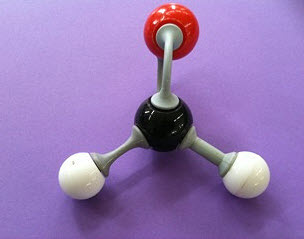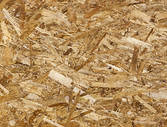What is Formaldehyde?

 Formaldehyde is used in small quantities in some food products as a preservative. You can also find it in many household products such as cosmetics, medicines and antiseptics. It commonly used in the production of plywood, paper and fertilizer, as well as urea-formaldehyde resins.
Formaldehyde is used in small quantities in some food products as a preservative. You can also find it in many household products such as cosmetics, medicines and antiseptics. It commonly used in the production of plywood, paper and fertilizer, as well as urea-formaldehyde resins.
How Could Someone Be Exposed To Formaldehyde?
The easiest way someone could be exposed to formaldehyde would be by simply breathing air that contains the vapor. We are all exposed to a certain small amount of formaldehyde which is in the air due to being off-gassed from products such as composite wood products.
These are a few examples of products that contain formaldehyde:
- Building insulation and materials.
- Preservatives which are used in certain cosmetics, medicines and other products such as fabric softeners and dishwashing liquids.
- Resins which are used during the manufacturing of wood composite products such as particle board, hard plywood and medium density fiberboard.
- Common household products such as permanent press fabrics, lacquers and finishes, glues, coatings and paints as well as paper products.
- Pesticides and fertilizers.
As formaldehyde is a byproduct of certain other natural processes and combustion it can also be found in cigarette smoke and emissions from fuel-burning appliances that are not adequately vented, such as kerosene space heaters and gas stoves.
Health Hazards
The health hazards that are linked to formaldehyde are caused mainly by the toxic effects after it has been in direct contact with the eyes or skin or after it has been inhaled or ingested, whether it be in liquid or vapor form. Small amounts can be tolerated, but large doses can be fatal.
If the skin is exposed to formaldehyde it can cause allergic contact dermatitis as well as skin irritation. Various symptoms might include edema, vesiculation, erythema and hives.
There have been studies that show that long-term exposure to formaldehyde increases the risk of cancer of the nose and sinuses, as well as lung cancer, oropharyngeal and nasopharyngeal cancer. If you believe or know you have been exposed to continued and/or high concentrations of formaldehyde it is important that you seek immediate medical attention.
To make sure that your home is not exposing your family to high levels of formaldehyde, you should have it professionally tested, particularly if you have had remodeling done.
Ready to Get Started?
To learn more about our Environmental Testing Services
click below, or contact us at (509) 720-0190
